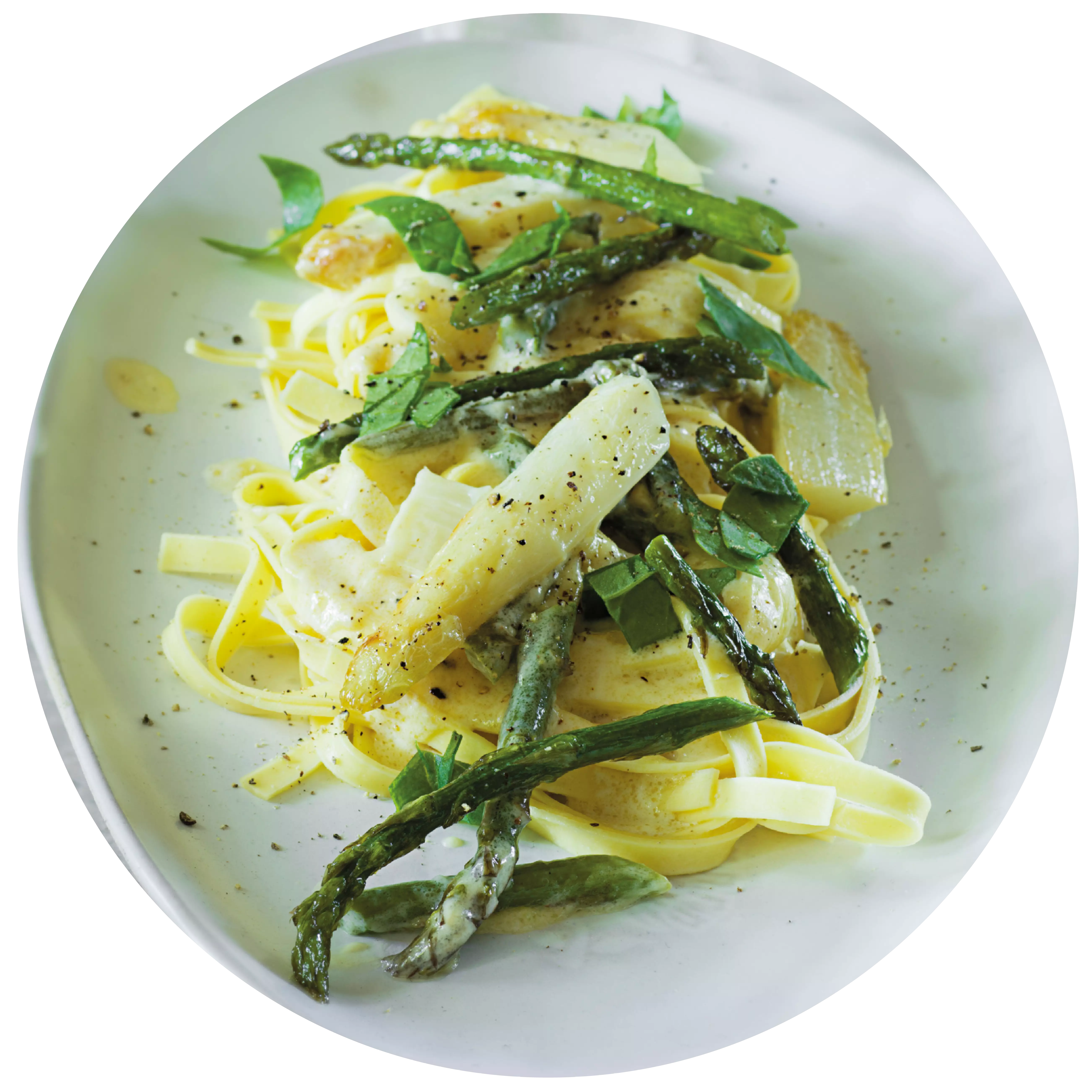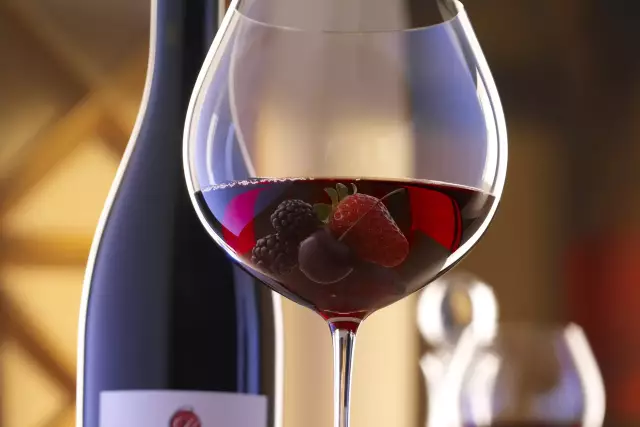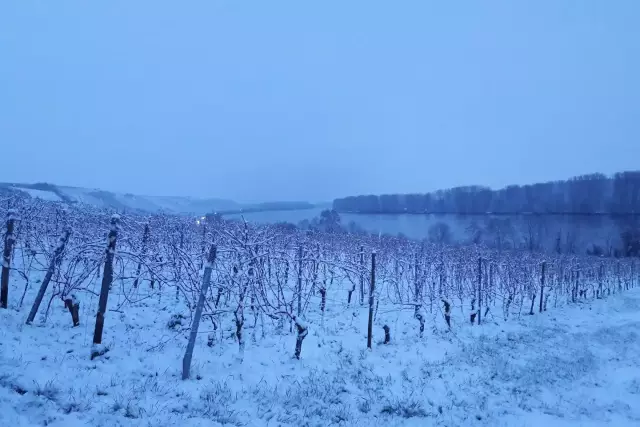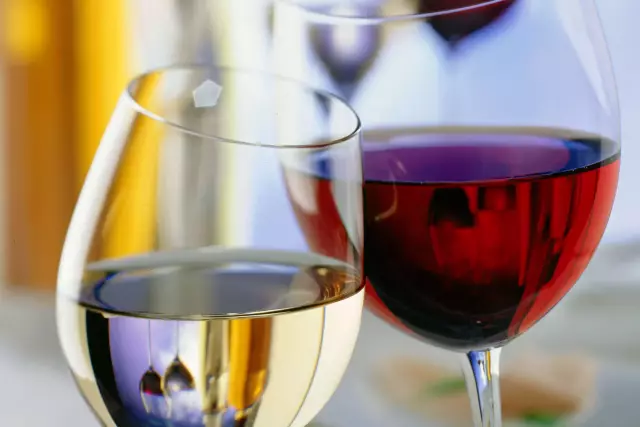Wine Crystals
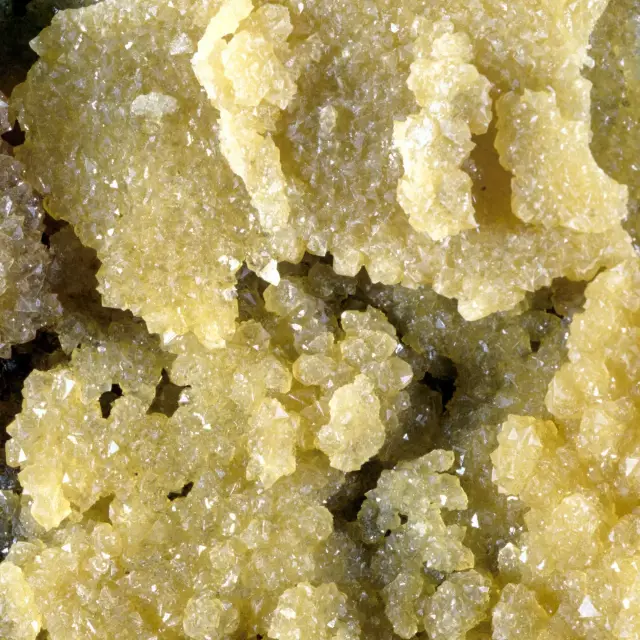
To set the record straight: tartrate crystals in wine, known as "Weinstein" in German, are neither harmful nor a sign of poor quality; on the contrary, they are characteristic of wines that are rich in minerals.
Tartrate Crystals – a feature of fine wine
While tartrates can crystallize in young wines, they are most likely to precipitate in older, top-quality wines, such as Auslese, Beerenauslese or Trockenbeerenauslese. The tiny crystals that form on the bottom of the cork or on the sides of the bottles are the mark of a wine that has had the benefit of long bottle aging.
Layers of tartrate deposits slowly develop on the walls of wine barrels, too. When illuminated, the interior of an old cask resembles an icy cave full of glistening crystals.
How do Crystals Develop in Wine?
Riper grapes have higher levels of tartaric acid. The longer grapes ripen on the vine, the longer they have to absorb minerals from the soil. Little by little crystals can develop when these minerals come into contact with tartaric acid. Rather than dissolving in the wine, they precipitate and form a deposit on the sides or bottom of the bottle, on the cork, or on the inside of the barrel.
Crystals in the Bottle – More Aroma in the Wine
Although tartrate crystals do not influence the quality of a wine, there is an interesting correlation between the two. Slow fermentation at low temperatures helps conserve a wine¹s aroma compounds. It also results in tartrate deposits developing later, in the bottle, rather than while the wine is still in the barrel. As such, crystals can be regarded as the mark of a good winemaker and a wine of quality.
Another kind of wine crystal
Fine, almost dust-like crystals are sometimes found in high-quality Auslesen, Beeren- and Trockenbeerenauslesen or ice wines. However, this is usually not tartaric crystals in the proper sense, but natural calcium salts that have precipitated due to higher storage temperatures. In addition, a so-called deposit often forms in rich and tannin-rich red wines. This rather powdery, dark-colored sediment is created from tannins and pigments that combine with age and sink to the bottom.
Neither these nor the tartaric crystals harm the wine in any way and do not reflect the quality. It is more of an aesthetic issue that it is not desirable in the glass. Pouring the wine gently leaves the tartar in the bottle. In the case of red wines, decanting beforehand helps - ideally in front of a light source, which makes it easy to see whether the sediment remains.
topical page: quality standards
topical page: grape varieties
What is "gushing" and what role do tartrate crystals play in it?
Tartrate can become a problem in carbonated beverages and especially in sparkling wine, as it offers many so-called condensation nuclei for the carbonic acid. It is released at these points and extreme foam development occurs - gushing.
Varietals

More recipe ideas
with bulgur Cabbage stew
with bulgur
- 200 Gramm Zwiebeln
- 1 ganze Knoblauchzehe
- 800 Gramm Spitzkohl
- 200 Gramm Möhren
- 400 Gramm festk. Kartoffeln
- 1 EL Kümmelsaat
- 1,5 Liter Gemüsefond
- 5 EL Olivenöl
- 2 EL Tomatenmark
- 2 EL edelsüßes Paprikapulver
- 3 TL Honig
- nach Belieben Salz & Pfeffer
- 120 Gramm grobe Bulgur
- 1 Bund Petersilie
- 4 Stiele Minze
- 1 ganze Zitrone
- 2 ganze Äpfel
- 3 EL Obstessig
Finely dice the onions and garlic. Clean, wash and quarter the cabbage, remove the stalk and roughly chop the cabbage quarters. Peel the carrots, halve lengthways and cut into approx. 2 cm wide pieces. Peel the potatoes and cut into approx. 2.5 cm pieces. Fry the carrots in a pan without fat and set aside.
Heat the vegetable stock in a small pan. Heat 3 tablespoons of oil in a large pan, sauté the cabbage in it for 10-15 minutes over a high heat until dark brown and remove from the pan.
Add the remaining oil to the pan. Fry the onions and garlic until translucent. Add the potatoes and muesli and sauté for 3-4 minutes, stirring constantly. Add the tomato purée and paprika powder and fry while stirring. Add the cabbage, honey and caraway and pour in the hot vegetable stock. Season with salt and pepper. Bring to the boil, cover and simmer for 45 minutes. Add the bulgur 20 minutes before the end of the cooking time.
Quarter the apples, remove the seeds, cut into approx. 1 cm cubes and add 10 minutes before the end of the cooking time. Pluck the herbs and chop medium-fine. Wash and dry the lemon, finely grate the zest and mix with the herbs. Flavour the stew with vinegar, salt and pepper and serve sprinkled with the herbs.
Tip: The pointed cabbage must be roasted really strongly and dark so that the aromas come out well.
- Spätburgunder / Pinot Noir (trocken)
- Trollinger (trocken)
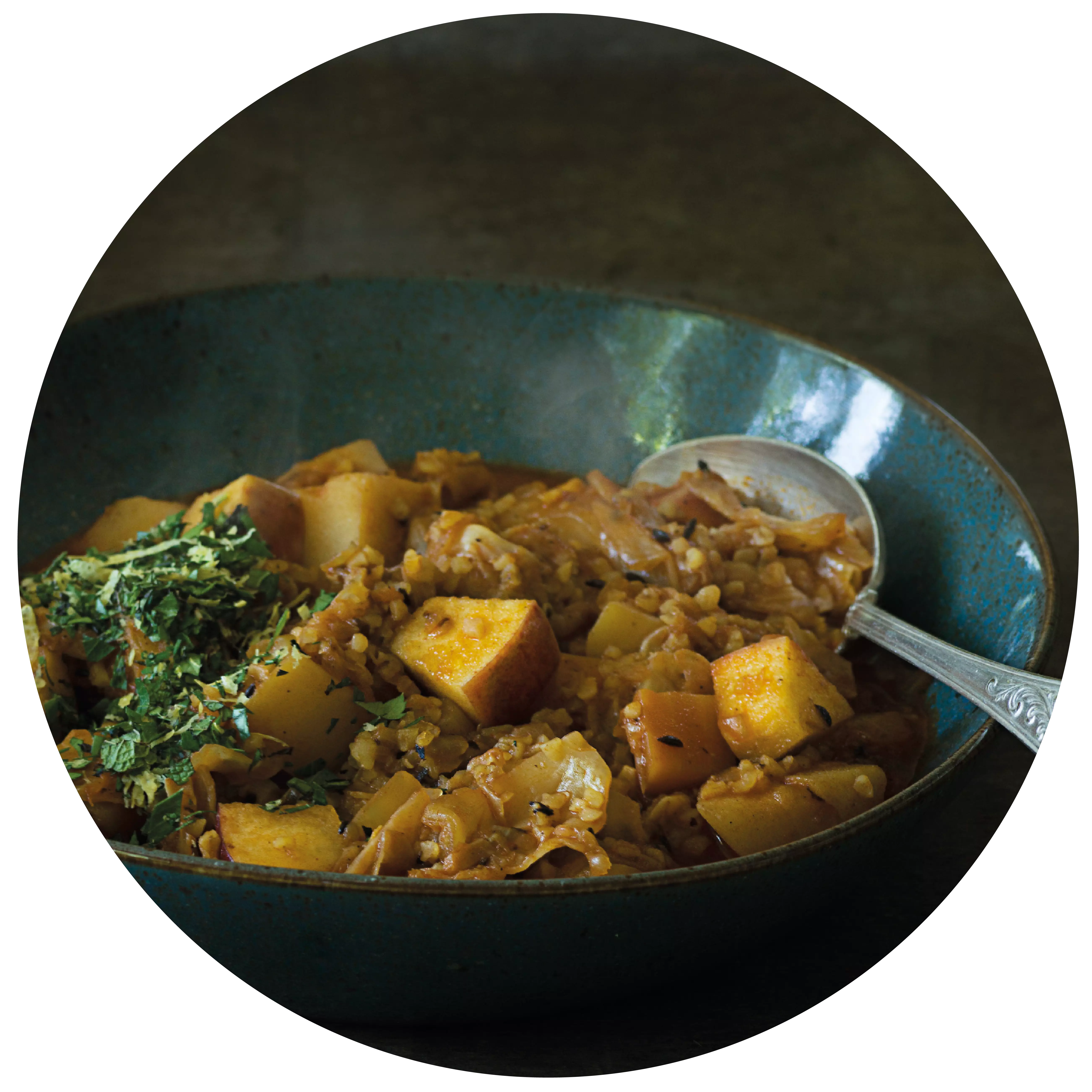
with semi-frozen goat's milk Lavender waffles
with semi-frozen goat's milk
- 2 Stück Eigelb
- 60 ml Ziegenmilch
- 500 Gramm weiße Kuvertüre
- 125 ml Sahne
- Abrieb und Saft einer halben Orange
- 2 cl Tresterbrand
- 8 Blatt Minze
- 125 Gramm Mehl
Semi-frozen goat's milk: Beat the egg yolks and goat's milk in a bowl over a hot bain-marie until creamy. Remove from the bain-marie and beat the cream until cold. Flavour with the zest of the orange and the marc brandy.
Liquefy the couverture in a bain-marie and stir into the lukewarm egg mixture. Whip the cream until stiff and carefully fold in. Line a parfait tin (triangular or gutter shape) with cling film. Pour in the mixture and smooth out. Cover well with cling film and leave to freeze in the freezer for at least 8 hours.
About 20 minutes before serving, remove the mould from the freezer and turn the parfait out of the mould. Remove the foil and cut the semi-frozen parfait into 8 slices.
<p
<p>Lavender wafers: Lightly mash the butter in a mixing bowl with a fork. Add the sugar and stir a little. Add half of the milk, the lavender sugar and the baking powder. Stir in the eggs and finally the rest of the milk. Mix everything well with a hand mixer for about 2 minutes to create a homogeneous, slightly liquid mixture. Bake the batter in batches in a waffle iron until golden brown.</p
<p>Arrange 2 slices of semifreddo on each waffle on a flat plate and decorate with mint leaves.
- Riesling (halbtrocken & feinherb)
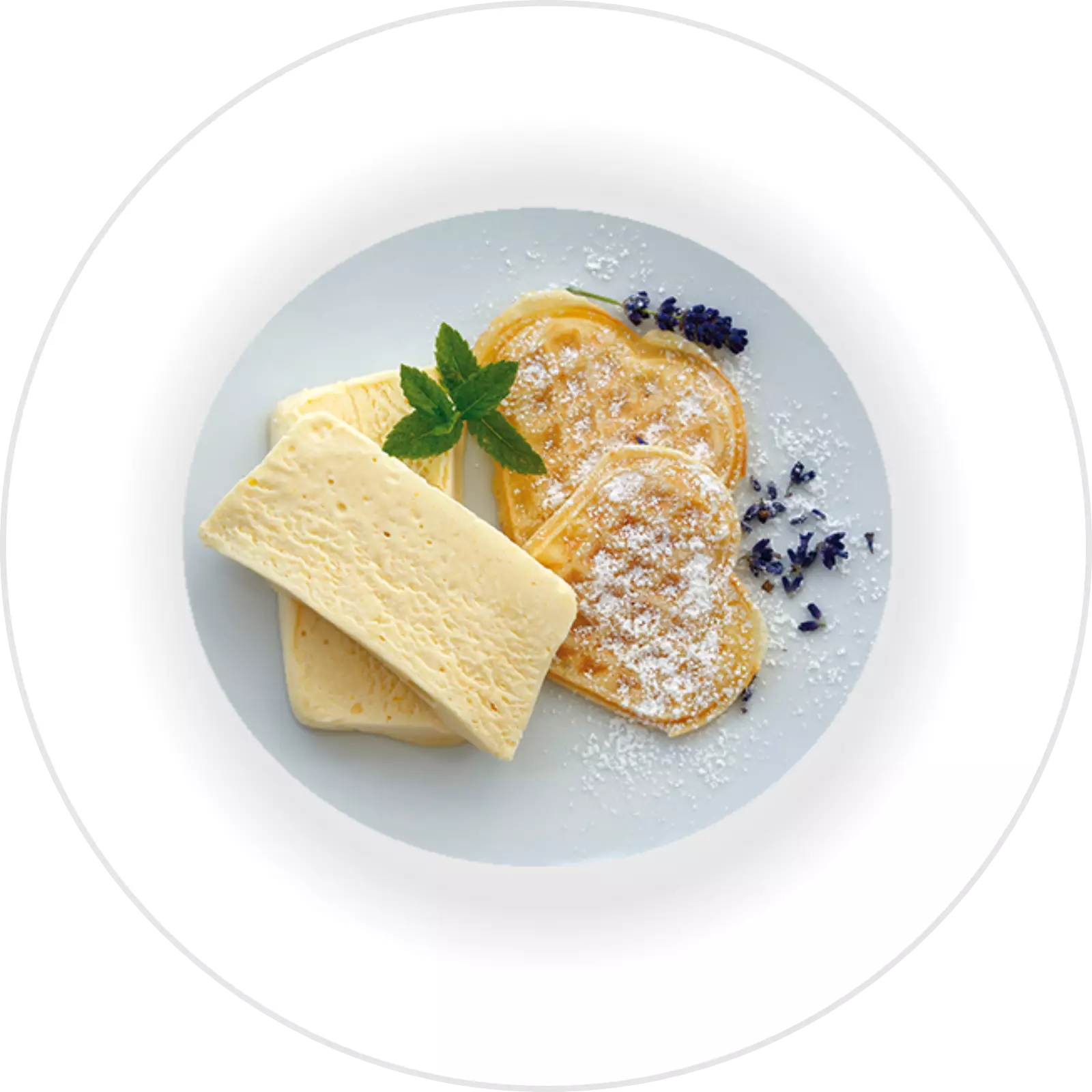
with apples and nuts Tarte flambée
with apples and nuts
- 250 Gramm Weizen- oder Dinkelmehl
- 150 Gramm Crème fraîche
- 150 Gramm körniger Frischkäse
- 2 säuerliche Äpfel
- 1 - 2 Zwiebeln
- 30 Gramm Walnüsse oder Haselnüsse
- 15 Gramm Hefe
- 1 EL Zucker
- 2 EL Olivenöl
- 2 Zweige frischer Thymian
- Nach Bedarf Salz & Pfeffer
- 200 ml warmes Wasser
For the yeast dough, sieve the flour into a bowl and make a well in it. Dissolve the yeast in a little warm water and pour into the well. Cover the bowl with a cloth and leave to rise for 10 minutes. Then knead the pre-dough with the dough hook of a hand mixer and gradually work in the warm water, the oil and a teaspoon of salt. Leave the kneaded dough to rise until it has doubled in volume (approx. half an hour, in a warm place).
Cut the onions into wedges. Roughly chop the nuts. Core the apples, cut into slices (the thicker the apple slices, the juicier the tarte flambée) and sprinkle with the sugar.
<p
<p>After resting, divide the dough and roll out each half on a baking tray lined with baking paper. Preheat the oven to 220 °C (top and bottom heat)
Spread the crème fraîche evenly over the tarte flambée and top with the apple slices and onion wedges. Spread the fresh cheese on top and sprinkle with the walnuts. Sprinkle with a little salt and pepper.
Bake on the lowest shelf for 12-15 minutes and sprinkle with the fresh thyme before serving.
- Riesling (halbtrocken & feinherb)
- Riesling (lieblich)
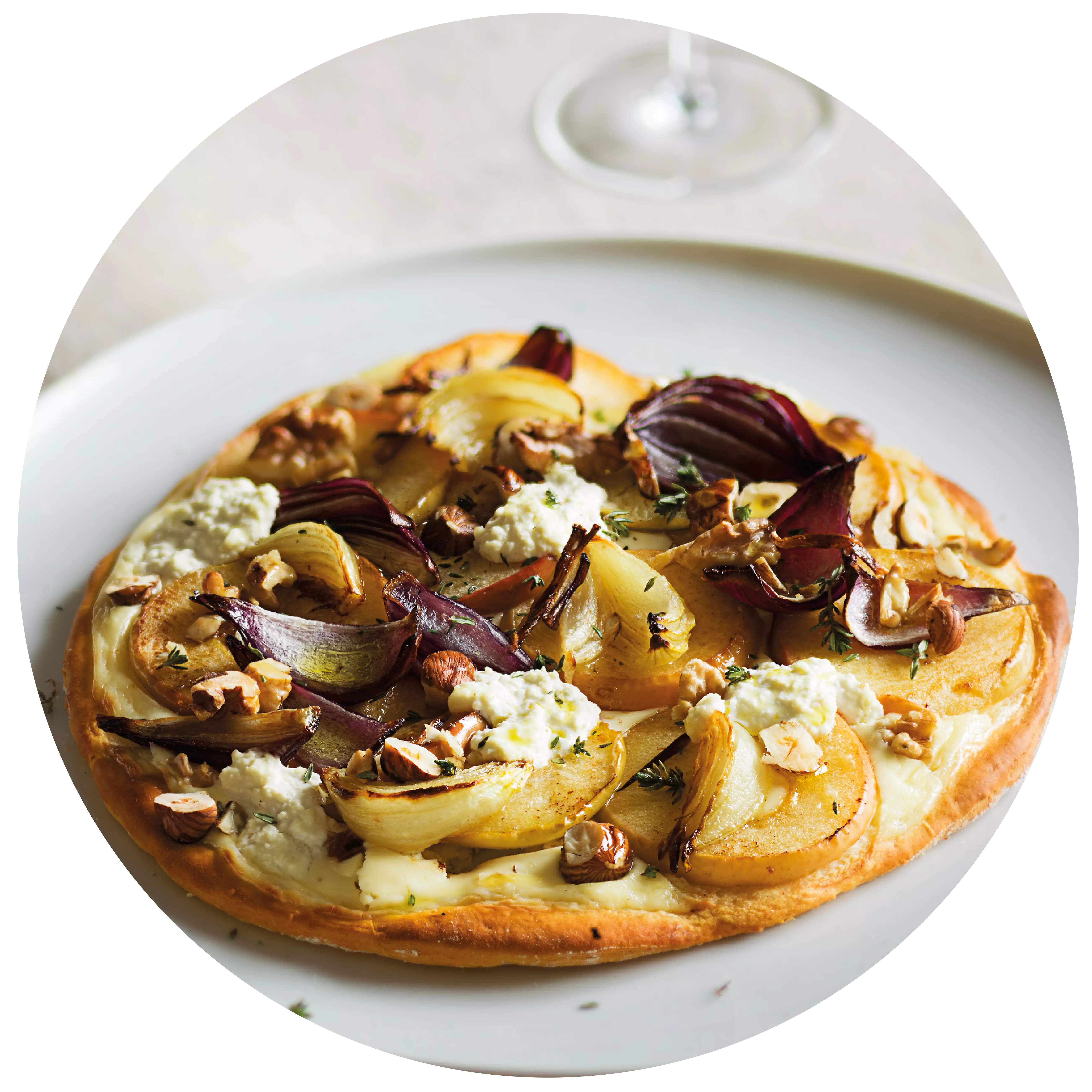
Asparagus harmonises perfectly with Silvaner Roasted asparagus with wild garlic and ribbon noodles
Roasted asparagus with wild garlic and ribbon noodles goes perfectly with Silvaner.
- 1kg weißer Spargel
- 1kg grüner Spargel
- 200g Butter
- 1 TL Zucker
- 2-4 EL Walnussöl
- 600g Tagliatelle
- 1 Prise Salz und Pfeffer
- 200 ml Schlagsahne
- 1 Spritzer Zitronensaft
- 8 Bärlauchblätter
Preparation:
Peel the asparagus (green asparagus only in the lower third), cut off the ends. Cut each spear in half lengthways and cut the halves in half. Cut the halves into 3 – 5 cm long pieces.
Heat the butter in a large pan, add the sugar. Caramelise briefly. Add the oil and asparagus and cook over a medium heat for approx. 10 mins. until al dente, tossing occasionally.
In the meantime, cook the tagliatelle in boiling salted water according to the pack instructions until al dente.
Pour the cream into the asparagus and reduce until creamy. Season the asparagus with salt, pepper and lemon juice.
Rinse the pasta, drain and mix with the asparagus. Cut the spring onions into strips and fold in.
Wine recommendation:
Silvaner Spätlese dry
- Silvaner (trocken)
